DronG/iStock/GettyImages
Butcher shops and supermarket meat counters usually contain several roasts cut from pork shoulders and beef chuck, but the corresponding shoulder portions of lamb are relatively hard to find. The whole or "square-cut" shoulder, so-called for its squared-off shape, has a lot in common with its pork and beef counterparts. It's relatively tough and interleaved with lots of fat and gristle, so it's not the best choice for ordinary roasting. However, when it's slow-cooked, all those faults become virtues. The shoulder develops a lush, rich and tender texture as the fat and connective tissues melt away.
Slow-Roasting the Shoulder
Trim any excess fat from the outside of the roast with a sharp knife, then use a clean paper towel to wipe away any bone fragments left behind by the butcher.
Heat a heavy skillet or Dutch oven on your stovetop, then add a tablespoon of oil. Sear the top and sides of the roast to a deep brown, which helps develop the lamb's savory flavors.
Season the lamb generously on all sides with salt and pepper, then add other flavorings such as garlic and rosemary if desired. Preheat your oven to 325 degrees Fahrenheit.
Place the lamb roast on the rack of your roasting pan, and slide it into the oven. Slow-roast the shoulder for 2 to 3 hours, until it's so tender you can easily pull off a morsel with your fork or gloved fingers.
Transfer the lamb to a serving tray and cover it loosely with foil. Let it rest for 10 to 15 minutes before carving and serving it.
Braising the Shoulder
Heat a large Dutch oven or heavy-duty casserole dish on the stovetop. Add 1/2 tablespoon of oil, and brown the lamb shoulder on all sides.
Remove the lamb from your pan, and add coarsely chopped onion, celery and carrot. Stir them in the hot fat until they're browned as well, then drain off any excess fat.
Season the lamb roast with salt and pepper, or other ingredients as desired. Rest it on top of the browned vegetables. Pour in enough broth or red wine to come halfway up the sides of the roast.
Preheat your oven to 325 F. Place the lid on your casserole dish or Dutch oven, and slide it into the middle of your oven. Bake the lamb shoulder for approximately 3 to 4 hours, turning it midway through the cooking time, until it's tender enough to cut with a fork.
Remove the lamb from your casserole or Dutch oven and transfer it to a serving tray. Cover it loosely with aluminum foil and let it rest for 10 to 15 minutes, while you strain the cooking liquid and thicken it to make a sauce. Serve the lamb and sauce together with your choice of side dishes.
Related Articles
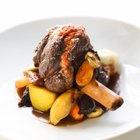
How to Cook a Single Lamb Shank

How to Cook a Deer Neck Roast in a Slow ...

How to Cook Boned Rolled Shoulder of ...
How to Cook a Goat Shoulder

How to Cook a Whole Beef Shank Roast
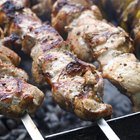
How to Cook a Tender Lamb Breast
How to Cook Buffalo Fillet

How to Bake a Pork Loin Center Half

How to Cook a Beef Topside Roast

How to Cook a Deer Brisket
How to Slow Cook a Pot Roast With Beef ...

How to Cook the Neck of a Deer

Slow Roasting a Leg of Lamb Until It Is ...

How to Cook Lamb Shanks in a Slow Cooker

How to Cook a Small Lamb Shoulder
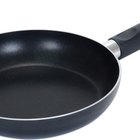
How to Cook Beef Top Round Pot Roast
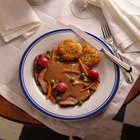
How to Prepare Chuck Tender Roast

How to Cook Beef Topside in a Slow ...
How to Cook Tender Peeled Knuckle
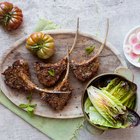
How to Grill Rack of Lamb
References
Resources
Tips
- Shoulders in their natural square shape are normally sold bone-in, but you can ask the butcher to debone and roll it for you if you wish. If you're cooking a bone-in shoulder, cut around the large shoulder blade to free it from the meat before you cook it. When the lamb is done, you'll be able to easily pull out the blade bone for carving.
- If you'd like to cook vegetables alongside the lamb, add them 1 hour after the beginning of the cooking time.
Writer Bio
Fred Decker is a trained chef and prolific freelance writer. In previous careers, he sold insurance and mutual funds, and was a longtime retailer. He was educated at Memorial University of Newfoundland and the Northern Alberta Institute of Technology. His articles have appeared on numerous home and garden sites including GoneOutdoors, TheNest and eHow.